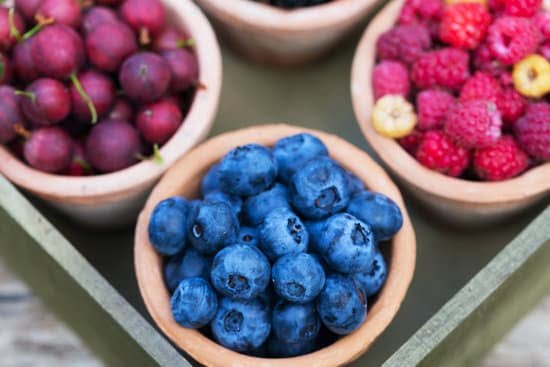Are you interested in starting a vegetable garden but hesitant to invest in expensive design layouts? Look no further, as we explore the world of vegetable garden design layout free options that will help you bring your green thumb dreams to life.
In this article, we will delve into the various factors to consider when planning your vegetable garden, choosing the right vegetables for your space, and designing a layout that maximizes productivity. Whether you have ample space or are working with limited square footage, there are creative solutions available that will enable you to enjoy the benefits of growing your own produce without breaking the bank.
With the rising popularity of sustainable living and organic gardening, more and more people are turning to vegetable gardening as a way to cultivate their own fresh, healthy produce. Not only does growing your own vegetables save money at the grocery store, but it also allows you to control what goes into your food and reduce your carbon footprint by eliminating transportation emissions.
The satisfaction and sense of accomplishment that come from eating something you have grown yourself is unmatched, making vegetable gardening an immensely rewarding experience.
In this article, we will provide valuable insights into how to plan and execute a successful vegetable garden while focusing on utilizing free design layouts. From maintaining your garden through weed control and pest management to maximizing your yield through harvesting best practices, we have everything you need to start enjoying the bountiful rewards of your very own free vegetable garden design layout. Stay tuned as we embark on this journey together.
Planning Your Vegetable Garden
When planning your vegetable garden, there are several factors to consider in order to ensure a successful and bountiful harvest. Some key considerations include:
- Location: Choose a spot that receives at least 6-8 hours of sunlight per day and has access to water.
- Soil Quality: Test the soil to determine its pH level and nutrient content. Amend the soil as needed to create a healthy growing environment for your vegetables.
- Space: Consider the amount of space you have available for your garden. Whether you have a small balcony or a spacious backyard, there are gardening options to suit any space.
In addition to these factors, it’s important to think about the layout of your garden. Consider the following when designing your vegetable garden layout:
- Plant Spacing: Take into account the recommended spacing between each type of vegetable to ensure they have enough room to grow and access sunlight and nutrients.
- Companion Planting: Some vegetables grow well together and can actually benefit each other by deterring pests or enhancing flavors. Consider companion planting when organizing your garden layout.
- Accessibility: Plan for easy access to your plants for watering, weeding, and harvesting. Consider pathways or designated areas for each type of vegetable.
By carefully considering these factors and taking the time to plan your vegetable garden layout, you can create an efficient and productive space for growing a variety of delicious vegetables.
Choosing the Right Vegetables for Your Garden
When choosing the right vegetables for your garden, there are several factors to consider to ensure a successful and bountiful harvest. Here are some tips to help you make the best selections for your vegetable garden:
- Climate: Consider the climate in your area and select vegetables that are well-suited for the temperatures and weather conditions.
- Soil Conditions: Take into account the type of soil in your garden and choose vegetables that will thrive in those specific soil conditions.
- Space: Evaluate the available space in your garden and opt for vegetables that can be grown effectively within that space.
It’s also important to consider your own personal preferences and dietary needs when selecting vegetables for your garden. If you have favorite vegetables or if you follow a specific diet, take those into consideration when making your choices. Additionally, think about the potential yield of each vegetable and prioritize those that will provide you with a plentiful harvest.
Ultimately, by carefully considering these factors, you can choose the right mix of vegetables for your garden that will result in a diverse and abundant harvest. Whether you prefer leafy greens, root vegetables, or vine produce, there are options available to suit any preference and gardening environment.
Designing Your Vegetable Garden Layout for Optimal Space and Production
When it comes to designing the layout of your vegetable garden, there are several factors to consider in order to maximize space and increase production. One important consideration is the orientation of your garden beds. Placing your beds north to south allows for even distribution of sunlight, ensuring that all plants receive adequate sun exposure throughout the day. Additionally, be sure to leave enough space between rows and plants to allow for proper air circulation and easy access for maintenance.
Another crucial aspect of designing your vegetable garden layout is the concept of crop rotation. This practice involves planting different types of vegetables in the same area in different seasons, preventing depletion of soil nutrients and reducing the risk of pests and diseases. By grouping vegetables based on their botanical families and rotating them annually, you can optimize production while maintaining soil health.
Incorporating raised beds into your vegetable garden design can also be beneficial for maximizing space and productivity. Not only do raised beds provide better drainage and soil aeration, but they also allow for closer plant spacing, effectively increasing yield per square foot. Additionally, raised beds make it easier to control weeds and pests, resulting in less maintenance and a more productive garden.
| Aspect | Consideration |
|---|---|
| Orientation | North-south placement for sunlight distribution |
| Crop Rotation | Grouping vegetables based on botanical families for soil health |
| Raised Beds | Better drainage, increased productivity per square foot |
Incorporating Companion Planting for a Thriving Garden
Companion planting is a gardening technique that involves planting different types of plants together in a way that benefits each other. This practice not only helps in maximizing space but also promotes healthier growth and reduces the risk of pests and diseases. By planning your vegetable garden layout with companion planting in mind, you can create a thriving garden that produces bountiful and healthy crops.
There are several benefits to incorporating companion planting into your vegetable garden design. For example, some plants can repel pests or attract beneficial insects, which helps in natural pest control without the need for harmful chemicals. Additionally, certain combinations of plants can help improve soil quality by fixing nitrogen or suppressing weed growth. By carefully selecting the right companion plants for your vegetable garden, you can create a balanced ecosystem that supports the overall health and productivity of your crops.
When planning your vegetable garden layout with companion planting, it’s important to consider the specific needs and interactions of different plant species. Researching which plants complement each other and which ones should be kept apart is essential for successful companion planting. By strategically placing compatible plant combinations throughout your garden, you can improve yields, enhance flavors, and create a visually appealing landscape that benefits both you and the environment.
Utilizing Vertical Gardening for Limited Space
Vertical gardening is an efficient and innovative way to maximize space in a limited area. This method involves growing plants vertically, using structures like trellises, stakes, or hanging containers. By utilizing vertical space, gardeners can grow a variety of vegetables while saving valuable ground space, making it ideal for small yards, balconies, or urban environments.
When implementing vertical gardening in your vegetable garden layout, consider the needs of the plants you wish to grow. Some vegetables are well-suited for vertical growth, such as tomatoes, cucumbers, pole beans, and peas. These plants can be trained to grow upwards with the help of supports and structures. Additionally, herbs and leafy greens can also thrive in vertical gardens when grown in appropriate containers or wall-mounted planters.
One key benefit of vertical gardening is improved air circulation around the plants, which can help prevent diseases and promote healthy growth. It also makes tending to the garden and harvesting crops much more convenient since everything is easily accessible at eye level or within reach. With careful planning and creative design, vertical gardening can truly transform a small space into a productive and flourishing vegetable garden.
| Vegetables Suited for Vertical Gardening | Benefits of Vertical Gardening |
|---|---|
| Tomatoes | Improved air circulation |
| Cucumbers | Maximizes space in limited areas |
| Pole Beans | Easier maintenance and harvesting |
Maintaining Your Vegetable Garden
Implementing Natural Weed Control Methods
Weed control is a crucial aspect of maintaining a successful vegetable garden. In order to keep weeds at bay without using harmful chemicals, consider implementing natural weed control methods. One effective method is mulching, which not only helps suppress the growth of weeds but also retains moisture in the soil and adds organic matter as it breaks down. Pulling weeds by hand or using a hoe can also be effective, although it requires regular maintenance.
Integrated Pest Management for a Healthy Garden
Pest management is another important factor in maintaining the health of your vegetable garden. Instead of relying solely on pesticides, you can adopt an integrated pest management (IPM) approach. This involves monitoring for pests and beneficial insects, creating physical barriers like row covers, and promoting biodiversity to reduce pest populations naturally. Additionally, practicing crop rotation and companion planting can help deter pests and reduce infestations without the need for harsh chemical interventions.
Promoting Beneficial Insects
Encouraging beneficial insects such as ladybugs, lacewings, and parasitic wasps can help control pest populations in your vegetable garden. Planting flowers such as marigolds, dill, and yarrow can attract these helpful insects while also adding beauty to your garden space. By promoting a balanced ecosystem within your garden, you can minimize the need for pesticides and create a healthier environment for your plants to thrive.
Harvesting and Enjoying the Fruits (Or Veggies) of Your Labor
When it comes to harvesting your vegetables, timing is everything. You’ll want to pay close attention to the maturity dates for each type of vegetable you’re growing so that you can harvest at the optimal time.
This will ensure that your vegetables are at their peak flavor and texture. For example, tomatoes should be harvested when they are fully colored and slightly soft to the touch, while carrots are best harvested when they have reached the desired size but before they become too woody.
Another key factor in maximizing your yield is proper harvesting techniques. For most vegetables, it’s best to use a sharp knife or scissors to cleanly cut the produce from the plant. Pulling or tearing vegetables off the plant can cause damage and reduce future yields. Be sure to handle your harvested vegetables with care as well, as bruising and rough handling can lead to spoilage.
Once you’ve harvested your vegetables, it’s important to store them properly to maintain their freshness and flavor. Some vegetables, like root crops and leafy greens, can be stored in a cool, dark place with high humidity. Others, such as tomatoes and peppers, are best stored at room temperature. By taking these steps, you can make the most of your free vegetable garden layout and enjoy an abundant harvest throughout the growing season.
Conclusion
In conclusion, designing and maintaining a vegetable garden can be incredibly rewarding both in terms of the satisfaction of growing your own food and the healthy, fresh produce you’ll have at your fingertips. By taking into account the factors mentioned in this article, such as proper planning, choosing the right vegetables, and utilizing space efficiently, you can create a thriving garden that provides an abundance of delicious fruits and veggies.
Additionally, incorporating companion planting and vertical gardening can further enhance the productivity and health of your garden, while also adding visual interest to your outdoor space. With careful maintenance including weed control and pest management, you can ensure that your garden remains productive throughout the growing season.
Furthermore, by following these guidelines for harvesting and maximizing your yield, you can fully embrace the rewards of all your hard work. Whether it’s enjoying fresh salads or cooking with homegrown ingredients, the benefits of having a free vegetable garden design layout are truly plentiful. So go ahead, get your hands dirty, embrace the process, and reap the bountiful rewards that come with growing your own vegetable garden.
Frequently Asked Questions
What Is the Best Layout for a Vegetable Garden?
The best layout for a vegetable garden typically involves organizing the plants in rows or raised beds. This allows for easy access to each plant for watering, weeding, and harvesting. It’s important to consider the mature size of each vegetable plant when planning the layout to prevent overcrowding.
What Is the Best Free Garden Design App?
When it comes to free garden design apps, one option that stands out is “Garden Planner” by The Old Farmer’s Almanac. This app allows users to plan and design their gardens by selecting from a wide variety of vegetables, fruits, and herbs. It also provides information about planting and harvesting times.
What Vegetables Should Not Be Planted Together?
Some vegetables should not be planted together due to compatibility issues or the risk of attracting pests or diseases. For example, potatoes and tomatoes should not be planted near each other as they can both attract similar pests and diseases that could harm both crops.
Another example is planting onions near peas and beans as they may inhibit their growth. Proper companion planting is essential for a successful vegetable garden.

Welcome to my gardening blog! I am passionate about plants and enjoy sharing my knowledge and experiences with others. In this blog, I will write about everything related to gardening, from tips on how to get started to updates on my own garden projects.





